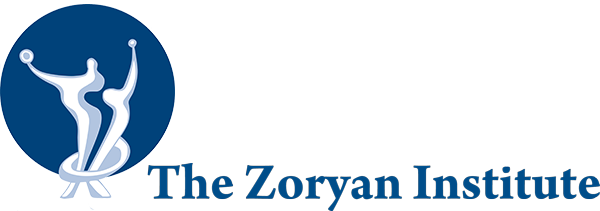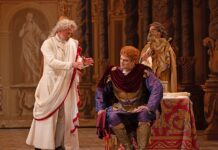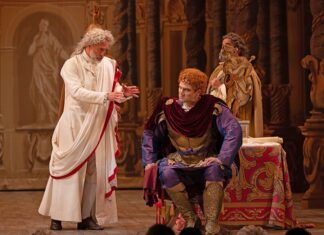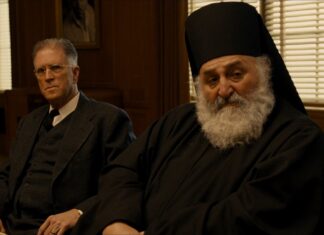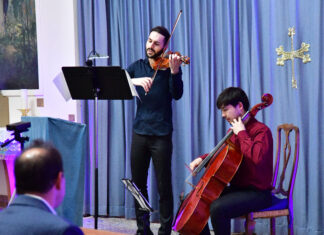By Aram Arkun
Mirror-Spectator Staff
BELMONT, Mass. – Fr. Andon Atamian has been the pastor of Holy Cross Armenian Church of Belmont for ten months. He is also the vicar general of the Armenian Catholic Eparchy of Our Lady of Nareg in the United States of America and Canada. Following the much-beloved Fr. Raphael Andonian as the pastor responsible for the New England region, he came to Boston with great pastoral experience and oratorical skills.
Fr. Atamian was born in mountainous Lebanon to survivors of the Armenian Genocide from Mardin. At a young age, he moved to Kamishli, Syria with his family. After Armenian Catholic school there, he went to Zmmar Monastery’s St. Mikayel Seminary from 1959 to 1964. He entered the Ardzivian Brotherhood of the Assumption of the Mother of God when he was 11 years old. After St. Mikayel he went to the Pontifical Gregorian University in Rome for six years to continue his higher education. He studied philosophy and theology at this Jesuit-founded institution. He also studied at the Pontifical Armenian College or Levonian Seminary of Rome.
In 1970, he was ordained a celibate priest in the Armenian Catholic community and began working as a parish priest in numerous places, including Iraq, Syria and Greece, before coming to the United States.
